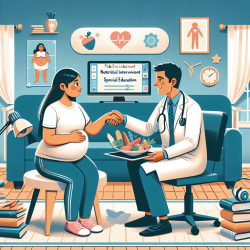In the realm of educational environments, ensuring the safety and well-being of students is paramount. A pivotal piece of research, "Epidemiology of School Injuries: A 2-year experience in a municipal health department," sheds light on the frequency and nature of school injuries, offering valuable insights for practitioners eager to enhance their skill set and implement effective prevention strategies.
Over a two-year period, the study meticulously documented injuries within a school setting, revealing a critical need for improved surveillance and prevention measures. By understanding the epidemiology of these injuries, educators, administrators, and healthcare professionals can develop targeted interventions to significantly reduce the occurrence of injuries in schools.
Here are several actionable steps derived from the research findings that practitioners can take to improve their skills and contribute to safer school environments:
- Implement Comprehensive Injury Surveillance Systems: Establish robust reporting and tracking systems for all injuries, no matter how minor they may seem. This data is invaluable for identifying patterns and high-risk areas within the school.
- Focus on Preventive Education: Integrate safety education into the curriculum. Teach students about the importance of personal safety and injury prevention, making it relevant to their daily activities in and around school.
- Enhance Supervision During High-Risk Activities: Allocate additional resources to supervise students during recess, physical education classes, and other high-risk times. Adequate supervision is key to preventing many types of injuries.
- Engage in Continuous Professional Development: Stay informed about the latest research and best practices in injury prevention. Attend workshops, webinars, and conferences focused on school safety and health promotion.
- Collaborate for a Safer Environment: Work closely with school administrators, parents, and the community to create a comprehensive safety plan. Collaboration is essential for implementing effective prevention strategies and ensuring all stakeholders are committed to student safety.
By applying the outcomes of this research, practitioners not only enhance their own skills but also contribute to creating a safer, more nurturing environment for students. The study underscores the importance of proactive measures and the role of education professionals in injury prevention.
For those interested in delving deeper into the specifics of the research and exploring more detailed findings, Epidemiology of school injuries: A 2-year experience in a municipal health department is an essential read.










